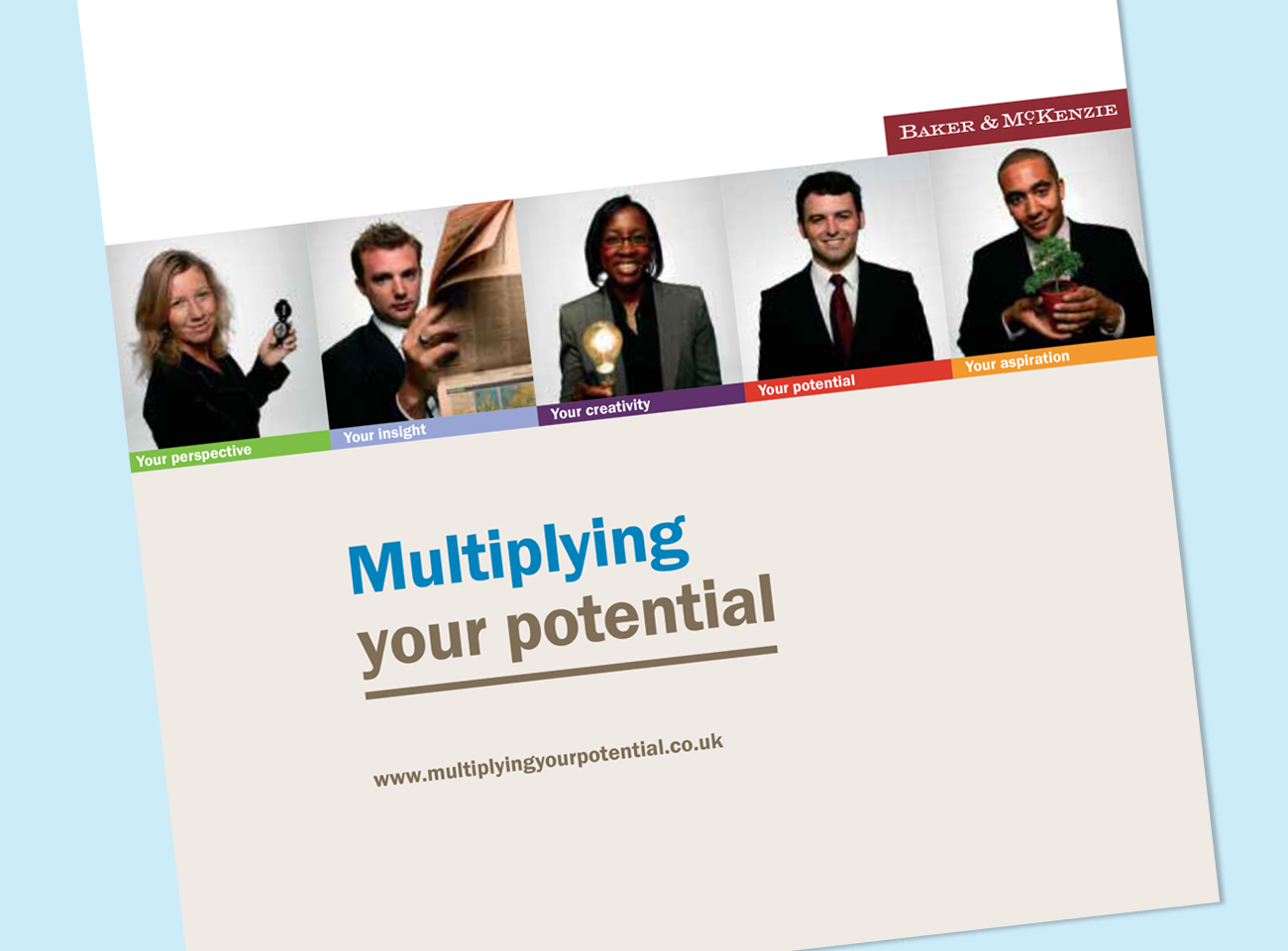Branding: 23.11.17

Graduate brochures: How to WOW graduates?
Visited law fair at King’s College, London. Here is what branding I found wooing graduates.
I was fully expecting most firms to be using the latest digital technologies to inform and attract the next generation trainees, with only a few die-hard firms relying on traditional printed material.
But no, most firms had some form of printed brochure or leaflet on display – from A5 to A2, from highly creative and innovative to template driven solutions; all trying to communicate their USPs to students.
This also demonstrates the appetite of the students themselves for having something tangible close at hand when making those all important training contract applications.
Having worked for different firms helping them create distinctive campaigns, thought I’d offer a few tips to help you woo and wow media savvy graduates with your literature.
Format Be open to using an alternative format to help your firm stand out. A4 is seen as corporate and doesn’t offer much scope for differentiation, so consider non-A4 sizes. It is a simple way of instantly saying ‘we’re a bit different’, and an opportunity to build intrigue and interest. But be practical, too. Will it fit into students’ bags or files? Can it be cost effectively reprinted? Some format ideas are not practical for small print runs.
Themes
Develop a thematic approach, where the text and imagery combine to express a single, unified and compelling message. Inevitably firms like to communicate a range of messages. Without a theme, brochures and campaigns can become a disparate collection of messages without a real focus.
Straplines
Avoid cliched straplines: the ‘great opportunity’ or ‘rewarding careers’ statements. Go for something that is more inspirational and emotive; something that can truly connect with students and help set you apart from the pack.
Photography
When it comes to photographing your people, don’t default to the standard head and shoulders shot, square on to the camera. Boring. Suggest excitement and interest by being creative. Give the agency or photographer enough room to flex their creative muscle. A particular area to be wary of is imagery of practice areas and sectors. It rarely works and too often falls back on cliches or standard shots from photo libraries. Unless you have a really compelling idea for practice area imagery, focus your efforts on getting the most from commissioned photography of your people and environments.
Copywriting
Make sure you agree the tone of voice in advance. There is nothing worse than spending a great deal of time and effort writing the text (or paying a copywriter to do it on your behalf), only for it to be savaged by a partner who decides to rewrite everything in line with their own style. It can save a lot of heartache if you agree the tone of voice with all the stakeholders well before putting pen to paper.
Guidelines
Be flexible when it comes to interpreting brand guidelines. Students are different to corporate clients. They are creative, demanding and fickle. Don’t bore them by adhering to strict guidelines. Allow your in-house team or agency the creative license to design something suitable for the student market, not for the internal branding police. So long as they are using the right logo and colours, give them room to create. After all, your brief will probably include the requirement to come up with something that is ‘different’, ‘distinctive’ and ‘attractive to students’; no easy task if you are handcuffing your designers by strict templates and guidelines.
Brief
Write a brief. It is the hallmark of quality. It makes you stop and think about your USPs and why bright discerning students should choose you over other firms. Don’t leave it to your designers to interpret your messages and personality. It is unfair, they are more likely to get it wrong. Be realistic, don’t say ‘you are different’ without valid reasons. And, please, try to come up with something more original than ‘our people’ make us different, which has become something of an
oxymoron.
Graphic Panels
Clearly, graphic panels are different to brochures, but they are a vital part of any successful recruitment fair, and no less worthy of some practical observations:
- Position your logo and strapline high up on the panel. In a crowded room full of noisy students and competing firms vying for attention, make it as easy as possible for people to find you. At King’s College, many firms failed to do this and it quickly became difficult to identify them through the throng.
- Keep any imagery simple and large; anything over-complicated get’s lost; students won’t stick around to work it out.
And Lastly, use of iPads.
It is intimidating enough for most students to approach your stand and engage in conversation; it is also no easy task during busy times, but inviting them to click and watch your videos or participate in a quiz on the iPad, and risk being sold to, probably creates another barrier for not approaching you. Apart from offering free iPads (wonder which firm will be the first to do this?), perhaps re-think how they can be readily used at law fairs?
Summary
Trainee recruitment is not an easy market in which to differentiate yourself where everybody is roughly saying the same things, using the same mediums and at the same events. But with some effective planning and preparation, combined with a fair amount of imagination and creativity, it is possible to make your brochures work harder without breaking the bank!
Five top tips
#1 Guidelines: Don’t restrict creativity through inflexible guidelines.
#2 Control: Don’t become an art director; give your designers the freedom to do what they are best at.
#3 Creativity: Steer clear of cliched straplines and imagery; they will fail to inspire media savvy students.
#4 Theme: Use a theme to unite your text and imagery.
#5 Be brave: Push boundaries to develop compelling story.


